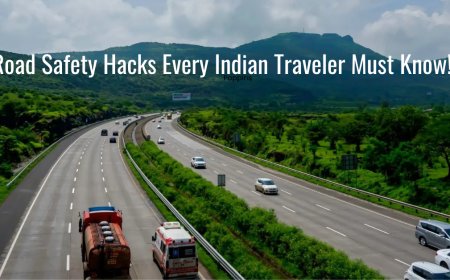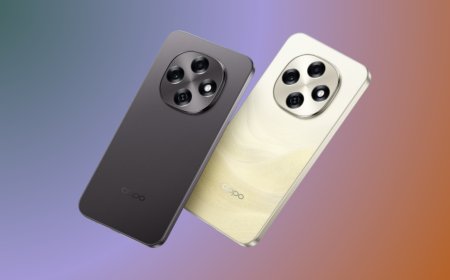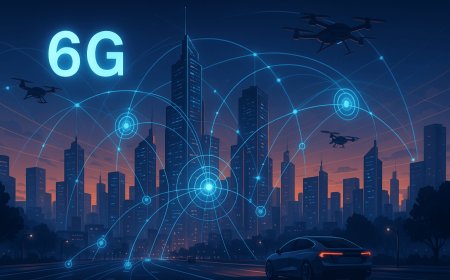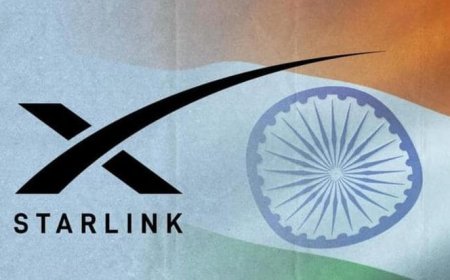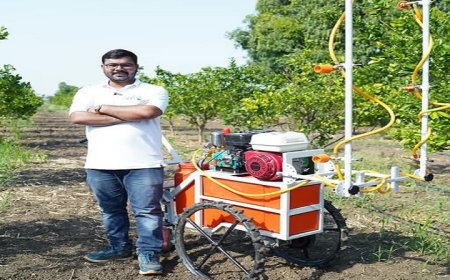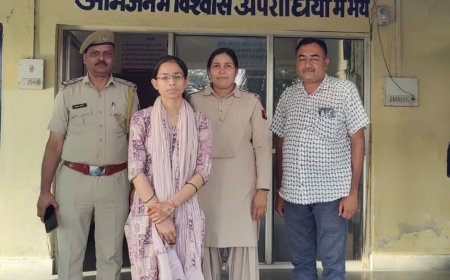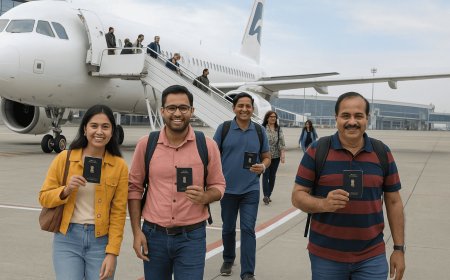How BSNL Is Revolutionizing Calling: VoWiFi and Satellite Connectivity Explained
Discover how BSNL is transforming mobile communication in India with VoWiFi and satellite connectivity. Learn how these innovations ensure seamless, network-free calling and what this means for the future of telecom.

Think of making an impassioned call from the belly of an outlying jungle village, far deep inside the jungle itself, even from the basement where one's cellular signal will necessarily weaken. That is no longer unthinkable. BSNL has made a gigantic stride forward courtesy of two mega innovations: VoWiFi, aka Voice over Wi-Fi ability, and direct satellite-to-device connectivity. The duo will revolutionise the way Indians communicate, particularly where cellular connectivity is negligible.
Let us unravel what they are, what they do, and why they will revolutionize the communication future of India.
What is BSNL VoWiFi?
BSNL launched the VoWiFi service in early October 2025, so you're able to make calls over Wi-Fi instead of needing to depend on mobile towers. In plain English, if you're connected online on Wi-Fi, say, at home, office, or even a coffee shop, you're able to make and receive voice calls the same way you would over an average network.
It is so far only offered by the South and the West circles, but the national launch is around the corner. The good news? Absolutely free to all the BSNL users.
VoWiFi does away with one of the most frequent annoyances: delicate coverage indoors. If you are an office dweller with deep walls or you have an office on the basement floor, Wi-Fi call keeps the voice calls stable and clear. The configuration is automatically done and is aided by the majority of Android and iOS devices when Wi-Fi calling is enabled from the settings.
By offloading cellular network calls over Wi-Fi, BSNL not only gives improved call quality but also diminishes cellular infrastructure dependence. The result for the end-user is seamless conversation receptions sans any signal bars disruption.
How to Enable BSNL VoWiFi on Your Phone
Setting up VoWiFi is quick and easy. Here’s how you can activate it:
For Android Users:
1. Open 'Settings' and select 'Network & Internet or Connections'.
2. Click on 'Wi-Fi Calling'.
3. Switch to enable Wi-Fi Calling.
For iPhone Users:
1. Go to 'Settings'.
2. Tap 'Phone'.
3. Choose 'Wi-Fi Calling' and switch the feature on.
Once you enable it, the phone will automatically make calls over Wi-Fi whenever the mobile is receiving a poor signal. The screen will display "Wi-Fi Calling" or "VoWiFi" during calls.
No need for any new SIM card or any new application. If you have a BSNL SIM and the internet is working, then you are all set.
Indian First Satellite-to-Device Connectivity
In this connection, BSNL has also introduced India's first satellite-to-device connectivity service. That is something much further; literally, beyond the earth's horizon.
Developed together by Viasat, BSNL's network ends straight on the satellites orbiting 36,000 kilometers above the earth. What this means is the capability of any device to get connected even without the help of any cell tower around or Wi-Fi connectivity.
It comes in very handy for people staying in remote places or disaster-struck regions. Imagine this: you are stranded somewhere amidst a flood, desert, or hilly pass where you have no cellular connectivity. Satellite connectivity still makes you capable of triggering an emergency alert, summoning an SOS, or even making online payments by way of UPI.
In India, where so much of the nation's population still lives where coverage is intermittent, this will be a game-changer. Convenience is not the only problem; the question is one of safety, inclusion, and access.
Why These Innovations Matter
The connectivity challenge is always one of reach. The cities have high-speed 4G connectivity with imminent 5G coverage, but hills and most rural areas hardly have good voice coverage. BSNL's dual missions tackle this vacuum straight on.
VoWiFi provides users with broadband access and the ability to make decent calls without the assistance of cell towers. Satellite connectivity pushes that coverage one step farther out, to where the tower never existed.
It entails connectivity enabling rural business owners, health care providers, teachers, and families from far-flung settlements to interact and gain access to principal digital services without any disruption.
The BBNL plan also supports the government's Make in India mission as well as the Digital India plan, whose goal is to expand digital connectivity as well as spur indigenous communication solutions.
How It Helps Rural and Remote India
Let's consider an example where this actually comes into practice:
Hills: People living in Himpal, Uttarakhand, or the Northeast will have little or no coverage. Satellite connectivity fills the gap.
Tribal and forest areas: The field personnel, NGOs, and government authorities are able to remain connected even in mountainous regions.
Disaster areas: The communication links are most often cut off by cyclones, earthquakes, or floods. Satellite communication makes it possible to coordinate rescues and emergencies.
Agriculture and transportation: The transporters and farmers from the rural sectors have access to direction, weather information, and market rates even while out of coverage with the help of mobile applications.
In other words, BSNL's new service offerings are no upgrades but lifelines.
Technological Transformation of BSNL: 4G to 5G
All are under BSNL's wider drive for modernization. The firm has been keeping busy deploying domestic 4G equipment and getting ready for the eventual 5G upgrade. As the nation deploys more than 100,000 towers, BSNL is improving infrastructure for the city as well as for rural India.
It is not only to compete with private players such as Jio or Airtel, but also to develop an inclusive telecom infrastructure where even the farthest location does not feel outcast. By converging the likes of VoWiFi, satellite connectivity, and future 5G strengths, BSNL is evolving as the traditional incumbent Telecom player as much as the digital empowerer.
What's Ahead for Users
The PSU will extend the VoWiFi coverage to all of India over the next few months. So far, this has been rolled out in some circles, but the early response is good. Users are getting better calls indoors and reduced call drops.
With regard to satellite connectivity, BSNL is working out the modalities on how this is to be incorporated into current plans. Prices as well as activation modes will come later. The first reports also indicate that the emergency service, such as SOS calls, as well as digital payments, will have utmost priority so that the service is made as inclusive as possible.
Achieved smoothly, this will provide India a new yardstick for access to telecom, setting the other players into alignment.
The Bigger Picture
What BSNL is attempting to achieve is something beyond the telecommunication domain. It's establishing digital societies. Where connectivity is poor, so much is lost out on education, online doctor consultations, and even plain communication during emergencies.
By making sure even the far-flung village is capable of utilizing itself for a voice call or conducting a UPI payment, the gap is shrinking for the BSNL. The development will also set off fresh possibilities for digital companies, online education, and online banking, where markets had gone offline.
The satellite-based connectivity also has broader national security and disaster management considerations. By allowing communication even when the ground infrastructure is down by having real-time communication, the ability to manage emergencies is improved for India.
Conclusion: A New Connection
BSNL's satellite-to-device and VoWiFi technologies are not only technological innovations, but also inclusion, security, and convenience. Combined, they are redefining what "network coverage" means. Soon, the idea of going out of coverage in a valley or a village will appear outdated. BSNL is not only catching the rest of the world up to global telecommunications standards with such projects but is lifting the bar on what's possible by leveraging technologies to wire up the entire nation. In the next few years, when telecenters are rolled out nationwide, millions of Indians will gain access to effective communication for the first time. And that is precisely the silent revolution India's communications sector so desperately required.
What's Your Reaction?
 Like
0
Like
0
 Dislike
0
Dislike
0
 Love
0
Love
0
 Funny
0
Funny
0
 Angry
0
Angry
0
 Sad
0
Sad
0
 Wow
0
Wow
0


























